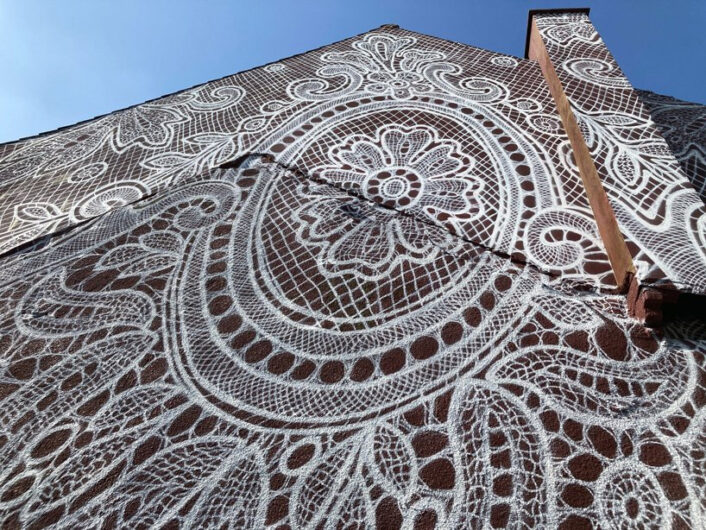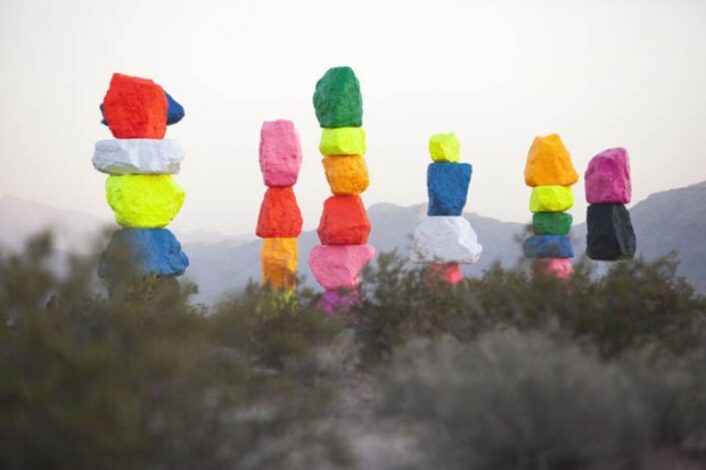Culture
Lorenzo Quinn’s hands
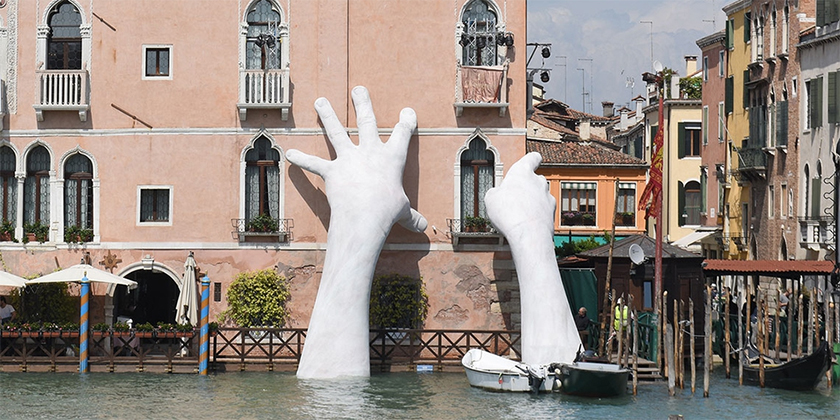
2017’s “Support” emerging from Venice’s Grand Canal.
Image courtesy of: Lifegate
Lorenzo Quinn is a contemporary Italian artist and one of the world’s leading figurative sculptors. His pieces are inspired by masters such as Michelangelo and Rodin. Though today he is best known for his giant human hand recreations, Quinn was not always a sculptor. Born in Rome, the actor split his time between Italy and the United States.
The fifth son of the actor Anthony Quinn, he studied at New York University and tried his hand at acting. However he quickly realized that he did not enjoy acting as much his father did and he enrolled at the American Academy of Fine Arts in New York City. It was almost immediately that he realized sculpting was his calling!
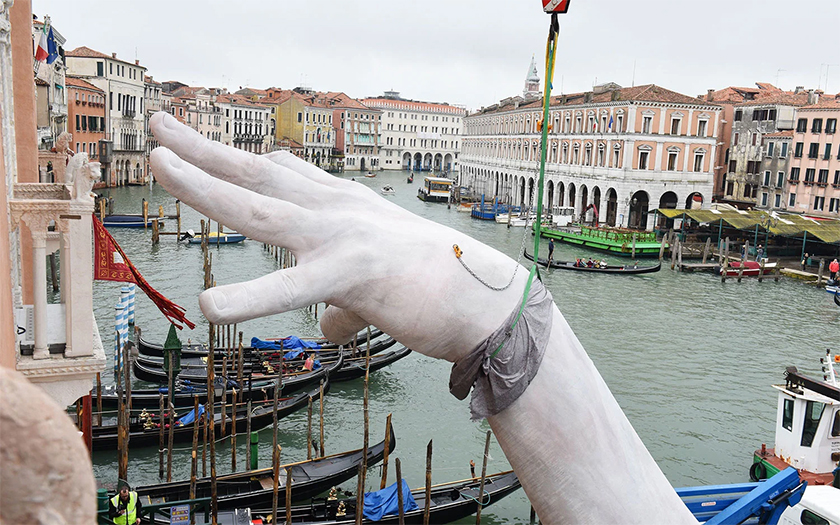
During installation…
Image courtesy of: Public Delivery
Designed in 2017 for the Venice Biennale, the monumental sculpture involves two gigantic hands emerging from the Grand Canal as though supporting the Ca’ Sagrdo Hotel. The hands appear to be “helping” Venice in a humankind way… in essence, holding up the building as it fights against the rising waters caused by global warning.
The hands also characterize human beings’ capacity to destroy the world while at the same time, attempting to save it. Pointing a spotlight on the impact of the relationship between city and water, Venice and similar cities are constantly evaluating the threat of rising water levels from global warming.
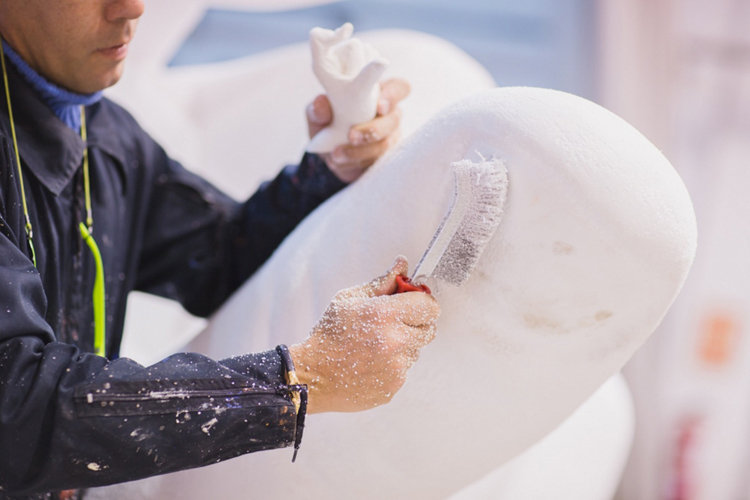
Courtesy of an interview with UR Design Mag, Quinn said, “I wanted to sculpt what is considered the hardest and most technically challenging part of the human body. The hand holds so much power – the power to love, to hate, to create, to destroy.”
Image courtesy of: UR Design Mag
Calling attention to the permanent effects of global warming, the sculpture hopes to to help remind humanity that it has the ultimate power to make and destroy the world. As a result, humans need to ensure that they deal with forthcoming issues.
Partnering with London’s Halcyon Gallery, Quinn created the sculpture in his Barcelona studio. He used an old method called lost-wax casting which is a process that involves making a mold created from a wax model of the design. This specific technique has been used worldwide for many centuries. The actual installation did not happen without issues. With the Biennale inauguration scheduled for the 12th, one hand was installed the day prior. The other hand however, was more difficult to place because the tide kept rising and lifting, elevating the 2.5 ton sculpture. Luckily, the tide fell and Quinn was able to get the hand installed properly.
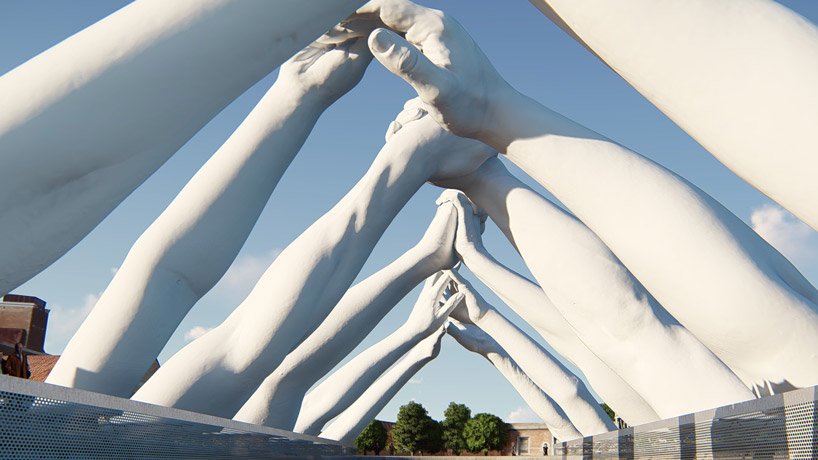
The artist says (courtesy of Design Boom), “Venice is a World Heritage City and it is the City of Bridges. It is the perfect location to spread a message of world unity and peace so that more of us around the world build bridges with others rather than walls and barriers.”
Image courtesy of: Design Boom
Two years ago, for the 2019 Venice Art Biennale, Quinn unveiled his newest work called, “Building Bridges.” This site-specific installation was made up of six pairs of hands joining across an arsenal entrance. Each pair represented one of the six universal essential values: friendship, help, love, hope, faith, and wisdom. The idea behind the sculpture is to help people see their similarities and overcome their differences in order to build a better world together.
The artist describes the pairs’ meaning as such… the first pair of hands symbolizes the notion of “friendship” by showing two palms gently touching; however their firm connection shows trust and support. “Wisdom” is expressed by using one old hand and one young hand presenting the idea of knowledge being passed down from one generation to the next. The third set of hands illustrates “help” via two connecting hands both empathetic and understanding so that a lasting relationship is founded.
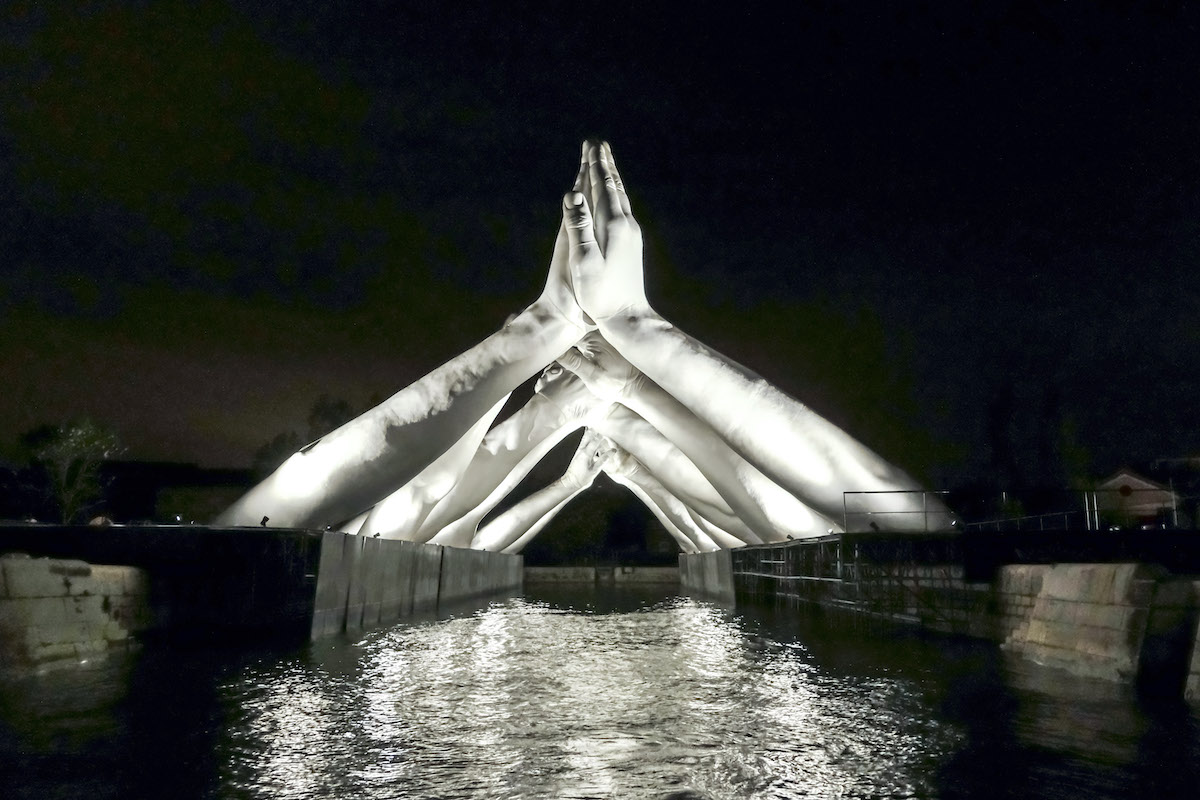
Quinn says of Venice (courtesy of an article by Jessica Stewart in My Modern Met), “It is the perfect location to spread a message of world unity and peace so that more of us around the world build bridges with others rather than walls and barriers.” We couldn’t agree more!
Image courtesy of: My Modern Met
“Faith” is embodied by what appears to be a tiny hand and a parent’s hand; the young child gripping the adult hand in “blind faith” symbolizes a parent’s responsibility to their children. Quinn hopes that this “blind faith” will allow youngsters to grow up with confidence, dependability, and self-worth. The fifth pair of hands show as an initial joining of interlaced fingers translating to optimism for the future; this is Quinn’s example of “hope.” Finally, “love” is expressed by tightly interlocked fingers pointing to the intensity of physical devotion.
This “bridge of values” is a fabulous manifestation of unity. The pairs of hands touch lightly or grip strongly or do something in-between; regardless, the bridge presents a positive message. In a time when we might feel divided from one another, Quinn hopes that we can focus on those things that bridge us closer together rather than those that separate us.

